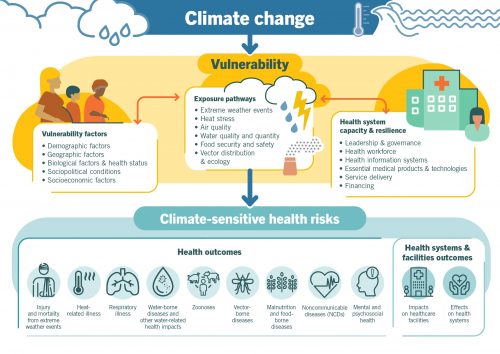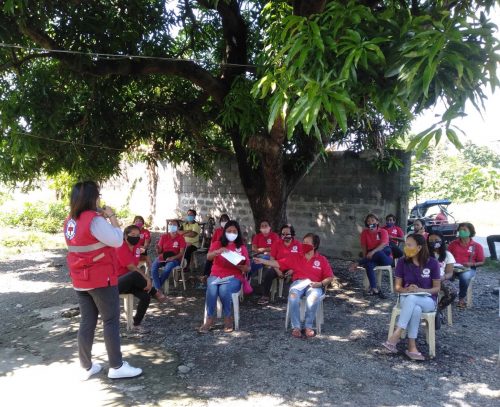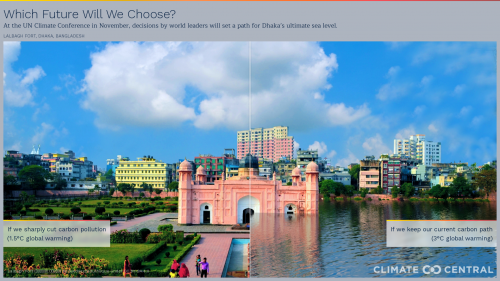As climate change spirals out of control, we must take global action to manage climate risks. Here, we present key insights from our work in the Alliance. Work that enables transformational change to fundamentally reduce the root causes of risks and address the needs of those most vulnerable to the impacts of climate change.
At the closing ceremony of COP26 in Glasgow, Patricia Espinosa, Executive Secretary of the United Nations Framework Convention on Climate Change said:
Some of the oldest and most magnificent bridges in the world can be found here in Scotland. It is therefore fitting that the bridge to historic transformation we must achieve has been built here in Glasgow. But bridges are meant to be crossed and cross we must. The waters of the climate emergency are rising rapidly.
Patricia Espinosa
The bridges may have been discussed and designed at COP26 but sadly, they weren’t built and it’s going to take a significant step change in ambition to keep 1.5°C alive.
Transformational change should drive climate action
We were however, heartened to hear Ms Espinosa use the word ‘transformation’ and indeed many participants from policy, practice and research used the term at COP26. At the Zurich Flood Resilience Alliance, we believe that ‘transformation’ and delivering ‘transformational change’ should be the driving force for action on climate change.
We need transformational change on climate mitigation, but we also need transformational change on climate adaptation and resilience. We need to aim for transformational change at scale to fundamentally change whole systems that are (increasingly) exacerbating risk and vulnerability for the most marginalized.
Climate change is the biggest threat facing humanity

After weeks of pledges, announcements, media – we are in no doubt that Governments all around the world are aware of the looming threats that climate change poses. The World Health Organisation notes that climate change is the biggest threat facing humanity.
The latest IPCC report is still fresh in our memories – the climate emergency isn’t a future phenomenon, it’s here, now. Between 2030 and 2050, in a high emission scenario climate change would cause approximately 250 000 additional deaths per year, by exacerbating malnutrition, malaria, diarrhoea, and heat stress.
So, what is stopping us from stepping up our efforts and tackling the impacts of climate change and focussing on the most vulnerable? We have decades of experience delivering overseas development assistance. We have decades of research, evaluations and overall lesson learning. Why aren’t we, as a global community, better at climate programming?
Climate finance for adaptation is increasing (slowly) so how can we improve outcomes?
In a world that has already warmed by 1.1oC and that has seen risks and impacts proliferating, awareness for the climate emergency and the need to keep the 1.5oC ambition was omnipresent at COP26. But this is just the start of a long and complex journey to ensure that the needs of those most vulnerable to the negative impacts of climate change are met and met soon.
Here we outline three points which we believe would help improve the effectiveness and efficiency of overseas development assistance for disaster risk reduction, enabling climate risk management that better addresses Loss & Damage and the needs of those most vulnerable.
1. Understand what ‘transformation’ might look like and build it into your plans.
The way we currently approach climate and disaster risk management alone isn’t going to work anymore. With more frequent and more extreme climate impacts looming, we must deliver transformational solutions that address the root causes of risks. Such transformational resilience-building:
- deliberately addresses the underlying social, cultural and economic root causes of risks
- takes a development-centered approach, harnessing multiple benefits
- is systemic
- is led by a long-term and anticipatory vision,
- is inclusive
- enables scaling – before disaster strikes,
- involves regular critical reflection and learning.
We therefore call on climate risk managers and development planners, as well as on global decision-makers to explore what ‘transformation’ might look like and build it into programmes and interventions.
2. Understand risk from the point of view of the most vulnerable people. Understand their ‘whole’ context or the ‘system’ in which they live and respond accordingly.
In the Alliance we design programmes with ‘compound’(multiple) risks in mind, prioritising a ‘systems’ thinking approach that is central to transformational resilience-building. We take a human centred perspective and propose a conceptualization of disaster resilience centred on wellbeing: ‘The ability of a system, community or society to pursue its social, ecological and economic development objectives, while managing its disaster risk over time in a mutually reinforcing way.’
Too often, donors decide on a thematic entry point to spend overseas aid e.g. delivering a women’s economic empowerment programme. Often, communities are disregarded and viewed as ‘recipients’ rather than ‘designers’ of their own futures.
During the Covid pandemic, the Alliance, with full support of our donor, was able to pivot programming to adapt to the changing needs of the communities we work with. Most communities face not only one but compounding risks as the pandemic illustrates.

Even before Covid-19, communities in the Philippines faced multiple risks from for example typhoons, floods, earthquakes, and volcanic eruptions. While the Alliance’s focus is on floods, our interventions and activities tend to build resilience to multiple hazards. IFRC have been able to adjust to this risk environment and deliver multiple co-benefits through work with communities.
We thus urge development planners and decision-makers alike to take a holistic, systemic view that engages local stakeholders in intervention design and decision-making.
3. Think about longer term future risks and find ways to help policy makers understand increasingly complex and wicked issues.
At a UNFCCC COP 26 Side Event: Averting Planetary Peril, panel members debated why it is so difficult to get decision makers to understand, and most importantly, act on climate science?

Benjamin Strauss from Climate central said ‘we have a choice about the legacy we leave to the world’. He’s used artificial intelligence to correct data from satellite imagery to create powerful images of famous places and is using these to help policy makers understand the climate data.
Mercy Corps’ Sajan Neupane delivered research findings at a COP26 Resilience Hub event which noted that in Nepal, despite having a national budget for disaster risk reduction, local decision makers often opted to fund near term and ‘visible’ projects rather than invest in community-based disaster risk reduction programmes.
That’s why we want to challenge decision-makers at all levels to strive to understand the long-term challenges caused by climate change and take action that embraces these long-term developments, so as to transform resilience-building for the increasingly complex and wicked challenges we will face in the future. To support better decision-making, the Zurich Flood Resilience Alliance are committed to scaling up our work in climate action and advancing climate-smart risk-informed development through our community programmes and advocacy.
Our futures
Ms Espinosa, and may others including ourselves, talked about transformation – now is the time to take all that we know and use climate support and finance in the best possible way to deliver transformative resilience building to the most vulnerable communities – who are least responsible for the climate impacts they are facing. “The waters of the climate emergency are rising rapidly” – we owe it to those most at risk – to get this right and deliver programmes to the right people, at scale and now.

Further reading on the topic of transformation and resilience to climate change
Alliance partners IIASA and ISET have been leading a project “Transformation and Resilience” and will publish key findings in the forthcoming book “Transformation and Disaster Resilience” (Springer) – providing a practical stock-take of what transformational risk management and adaptation is. For a detailed overview look at this working paper.

Comments